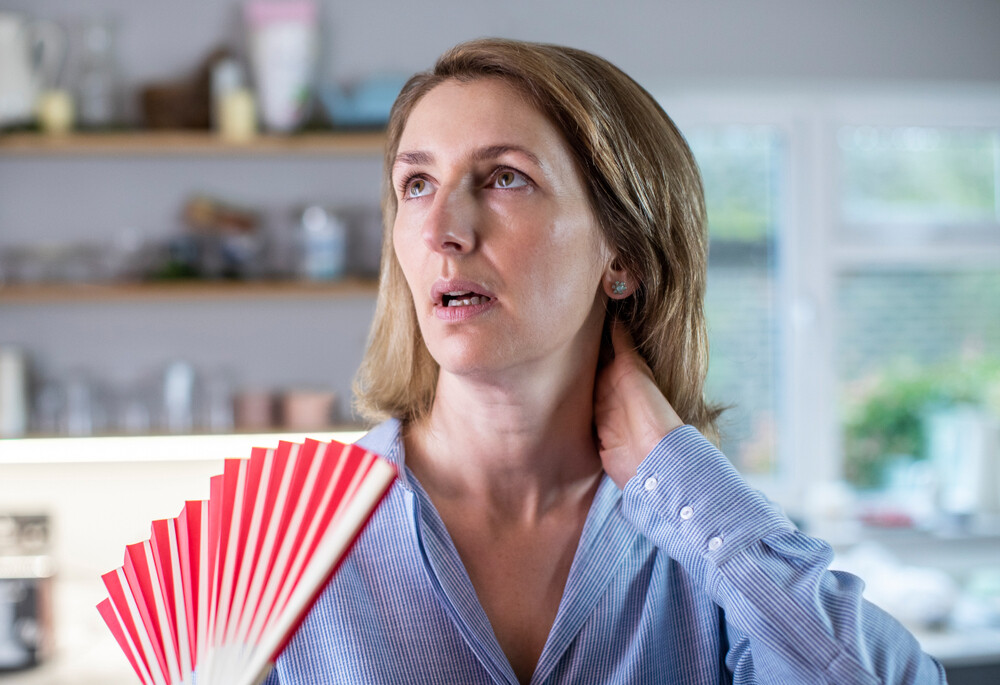Sooner or later it hits every woman: the menopause. A time of upheaval and rediscovery of the own body.
What is menopause?
The menopause is a significant break in a woman’s life and basically the counterpart of puberty. During puberty, the female body prepares to produce fertile eggs, whereas menopause marks and defines the end of the fertile phase with the last menstrual period.
In Western countries, the menopause occurs on average at the age of 51.4 years, but there are also cases of premature menopause (climacterium praecox), which occurs either naturally or as a result of radiotherapy or chemotherapy. In these women the bleeding stops at the age of 35.
Which phases does the body go through?
The first changes in the cycle occur years before the actual menopause. On average, the woman is about 47 years old when she enters premenopause. During this phase the hormonal balance gradually changes. The production of the hormone progesterone (corpus luteum hormone) decreases and the concentration of oestrogen increases at the same time, thus increasing the intervals between bleedings. Ovulation only rarely occurs.
In the second phase (perimenopause), the actual peak phase of the climacteric, the follicle maturation in the ovaries dries up, and ovulation eventually ceases completely. In the course of this, the production of the hormone oestrogen decreases, while the male hormones continue to be produced at their previous level. During this time, women suffer from a low oestrus level and the inertia of their ovaries.
The postmenopause begins about one to two years after the last menstruation. In this phase, the production of progestin and oestrogens comes to a standstill, and contraception is no longer necessary. Women are then on average about 65 years old.
Which symptoms indicate the climacteric?
The signs of the onset of menopause are varied and not equally clear-cut. At first, women may only feel tension in the breasts and mild irritability, but the symptoms increase as the menopause progresses. Typical menopausal symptoms are:
- Hot flashes
- Weld outbreaks
- Nervousness
- Tachycardia
- Insomnia
- Depressiveness
- Hair Loss
- States of exhaustion
- Vaginal dryness
- Sexual problems
- Urinary tract infection
- Cycle disorders
- Bladder weakness
But what causes these “side effects”? Experts agree that the symptoms are caused by the decreasing levels of female hormones. In addition to the obvious physical problems, however, the estrogen deficiency can also disturb the emotional balance. Mood swings, listlessness and depression are not uncommon in the menopause. A testosterone deficiency can also play a role in women.
In addition, a sexual dysfunction can often develop during menopause, as the mucous membranes in the genital area become thinner and thus become less moisturised. Accordingly, sexual arousal is also less intense – and “smooth” sex becomes less frequent.
Because of the low estrogen level, women are also more susceptible to osteoporosis, joint pain and cardiovascular disease. This is because when hormone levels drop, more bone is broken down. However, there are some things women can do to keep their bodies healthy and fit.
What can women do about it?
As a preventive measure, it is of course advisable to give up smoking, because heavy smokers experience their last period earlier than non-smokers on average. If the menopause has already begun, a healthy lifestyle is essential for affected women. Swimming, cycling or Nordic walking keep you active – combined with the right low-sugar and low-fat diet, they are balm for the soul. Then you also escape another side effect of the menopause: overweight.
In addition, there are some therapies for severe menopausal symptoms. For example, traditional Chinese medicine or hormone yoga can help to get the symptoms under control. However, if they are too severe, women can also consider hormone replacement therapy (HRT). Hormone preparations for hormone therapy are available as tablets, gels, patches, nasal sprays or injections. With this hormone therapy the oestrogen level is raised again, which has a positive effect not only on hot flushes but also on mood.

